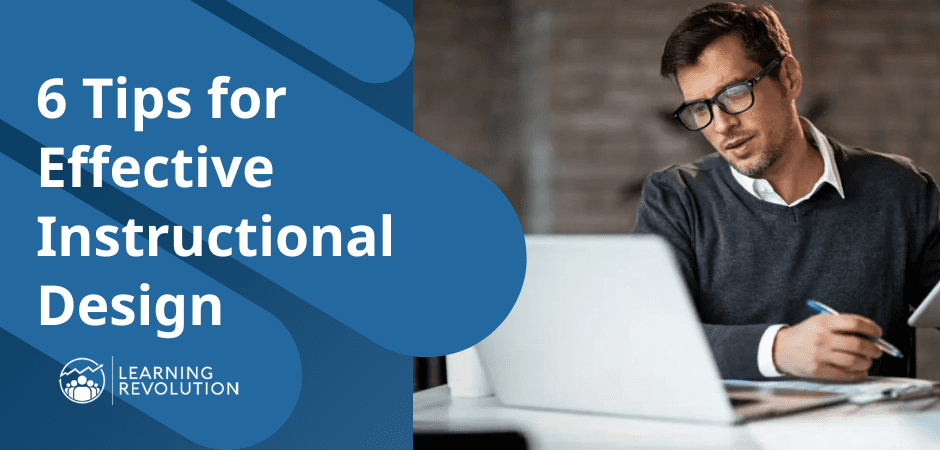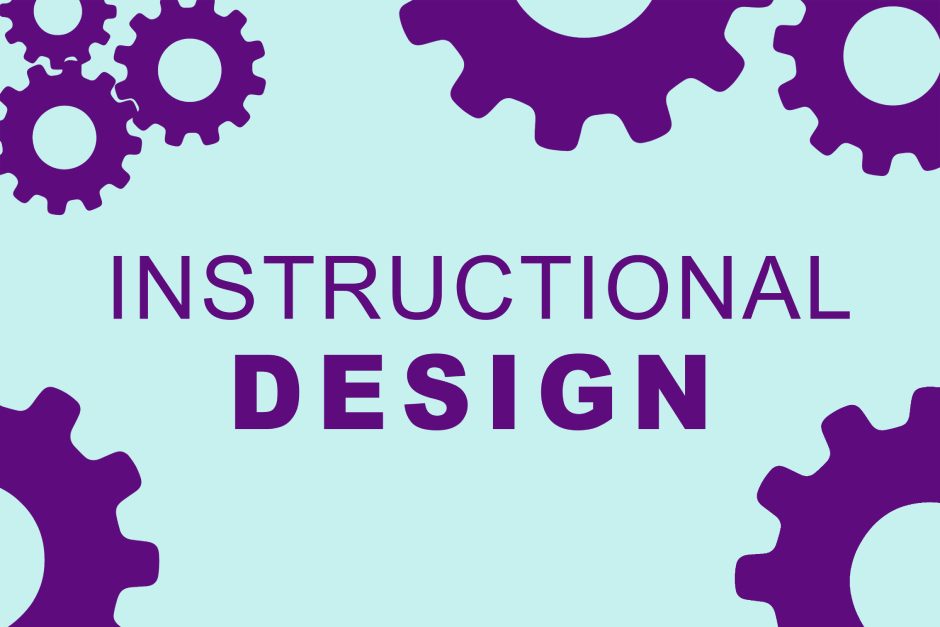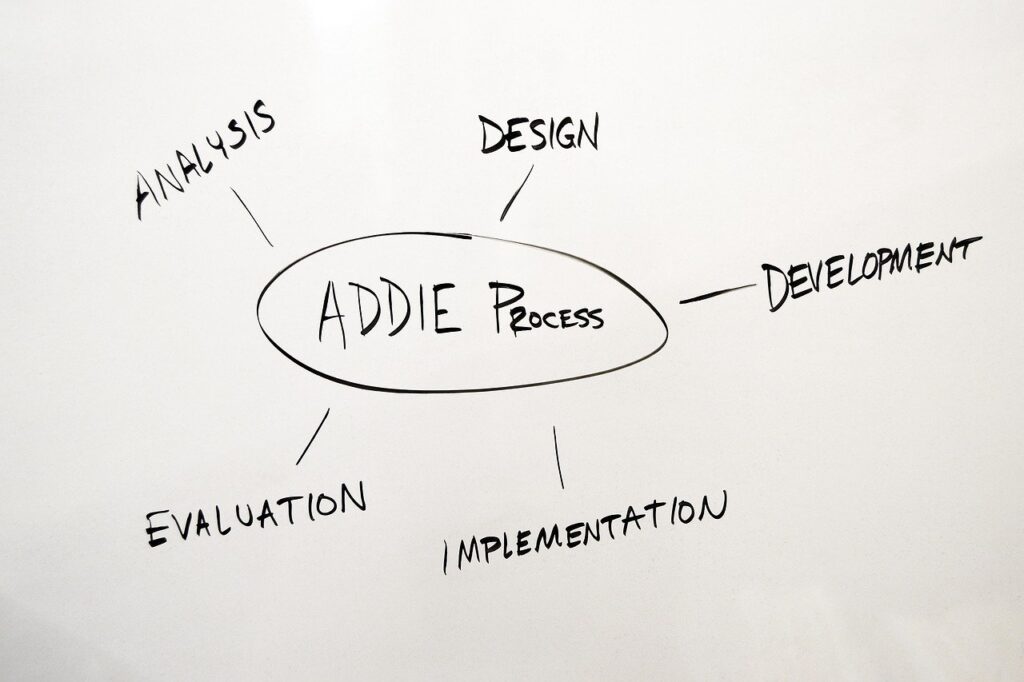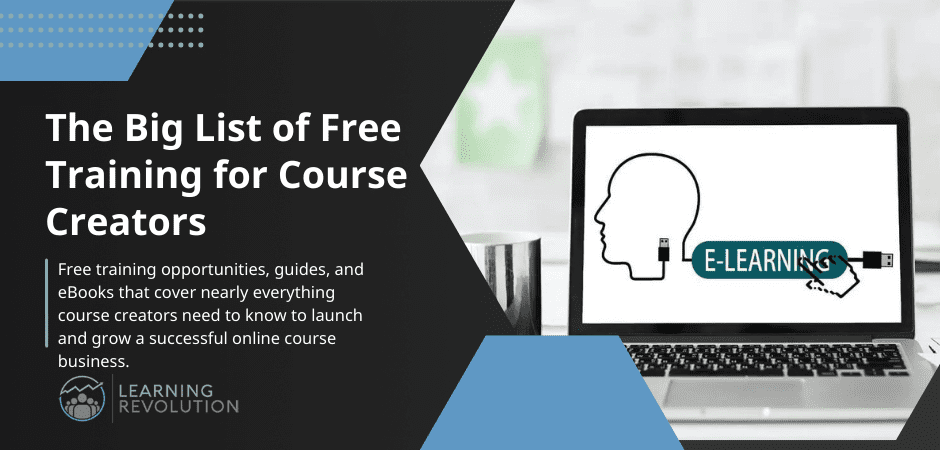

Sharing your expertise through online courses is a great way to help others. At the same time, you can expand your business or brand and earn valuable revenue.
An online approach makes it so much easier to create, access, and sell courses. However, plenty of other aspiring edupreneurs are doing the same thing. How can you make your course offerings stand out?
Good and consistent instructional design adds substantial value to courses. Clearly defining your course’s goals and finding opportunities for interactive, experiential learning are just a few examples.
Let’s look at the foundations of instructional design — what it is, and what makes it important. Then, we’ll review suggestions to improve instructional design and create more engaging, effective, and valuable learning experiences.
What is Instructional Design?
On the most basic level, instructional design involves creating learning materials and experiences for a course. However, the real intent of instructional design is to build relevant, effective experiences and materials.
Effective design supports learning as students move through the course. It helps them reach their objective — the reason they signed up for the course to begin with. It also clarifies the learning process, from intended results to how their knowledge will be assessed.
This leads to a better overall experience for participants. That’s good for your brand or business and for the learners themselves.
The Association for Talent Development offers this longer, more detailed explanation of instructional design:
“[Instructional design] is a systems approach to analyzing, designing, developing, implementing, and evaluating any instructional experience based on the belief that training is most effective when it gives learners a clear statement of what they must be able to do after training and how their performance will be evaluated.”
You can break instructional design down into two key components:
- Evaluating and defining the goals of the course
- Building a learning experience and environment that helps students reach those goals
Instructional design is an academic discipline. Degrees are granted up to the Ph.D. level. It’s also a key responsibility for all types of educators.
Many instructional design discussions center on academia and instruction in schools. However, it’s also very relevant to all edupreneurs and course creators.
Making instructional design a priority can help set your offerings apart from competitors. That’s very valuable in a crowded market. There are many other course creators out there. That means the quality of your learning materials and process has to be a top priority.


Why is Instructional Design Important?
Building a course that follows instructional design best practices is important because it:
- Makes course goals clear
- Helps students gain and retain knowledge
- Creates a more focused learning experience
- Supports better outcomes for participants
- Can help your course creation business become more successful
Good instructional design can lead to higher course completion rates. We offer an in-depth explanation of why it’s so important for learners to make it all the way through a course. In brief, some top-level benefits include:
- Making it easier to create powerful marketing collateral, like success stories and testimonials
- Developing a community around your content, including satisfied customers who may purchase more courses in the future
- Building proof of concept, which makes it easier to identify new marketing opportunities and potential customers
- Encouraging feedback about the current state of your courses, which can make improving and fine-tuning them easier
As you look for resources to help grow and improve your business, keep instructional design in mind. While it’s only part of what makes a business successful, it’s absolutely crucial for student success.
Foundational Concepts in Instructional Design
It may not surprise you to hear that there are many theories and principles related to instructional design. As an academic discipline, it involves plenty of in-depth research.
We want to focus on the practical aspects of design, of course. The concepts we’re about to review are vital for effective instructional design on the practical level. They can guide you as you build effective learning experiences for your course participants.
What are the 4 Basic Elements of Instructional Design?
Depending on how you want to look at it, there are four foundational questions to answer (or basic needs to address) when it comes to designing effective learning content.
There are similar principles you can use to guide your own initial course conceptualization, too. Our Market, Means, and Motivation (3M) model can help you find the sweet spot for your course.
Academic publisher Wiley provides a simple list of these four questions. Let’s take a closer look at each of them individually. To design effective instruction, you need to keep all of these considerations in mind.
Understanding Your Learning Audience
Who are you designing a course for? What are the most effective ways that your potential students learn? A firm grasp of the specifics of your audience can be the foundation of a useful and enriching learning experience.
You need to know who will want to take the course so you can gear the learning experience toward them. Are you planning to develop an introductory course? You’ll need to consider factors like a lack of prior familiarity and the need to build foundational knowledge.
The capabilities of your students need to be considered, too. Experienced, high-level professionals may be very comfortable with the process of learning, for example.
On the other hand, a beginner’s course or one with a very broad potential audience may need to take more time to explain concepts like knowledge assessments. They may not be as familiar with tests, quizzes, and similar tools outside of their past educational experience.
Understanding your audience makes it easier to orient everything in your course toward their capabilities and limitations.
Defining Course Goals
What new knowledge and skills do you want your students to develop? What should they be able to do after successfully completing the course?
The more specific you can be in this area, the better. Clear and precise course objectives make it easier to design learning materials that help students reach those goals. Additionally, good definitions of goals make it easier to market your course to the right audience.
Deciding how to Best Instruct Students
You can provide learning content to your students in a variety of ways. Text, videos, assessments, assignments, activities, and much more can all play important roles. Deciding how to deliver instruction is crucial to help students reach the course objectives.
Breaking your major goals into smaller, more discrete objectives can help you choose how to instruct students.
Providing basic information may be as (relatively) simple as recording a video or sharing text and related media for students to watch or read. Interactive activities, meanwhile, can be more effective for applying knowledge and assessing learner progress.
Choosing Evaluation Processes
How can you tell if students have gained and retained the knowledge or skills the course is built around? This is a crucial part of the design process in terms of delivering value.
Evaluations can be completed through a variety of testing and assessments. It could be a multiple-choice test, a project, a written essay, or something else entirely. You’re the expert when it comes to your course content. Think about how you can tell if a colleague truly knows what they’re talking about, or how you were assessed in the past.


The ADDIE Model of Instructional Design
One of the most popular models for instructional design is ADDIE, standing for:
- Analysis
- Design
- Development
- Implementation
- Evaluation
This blog post covers the ADDIE model in detail. To briefly review, it’s similar to the four questions/concepts described above. However, it also includes an evaluation process — not for your students, but for the course itself.
It’s crucial to make adjustments to your course and not simply rely on work done in the first two phases. Developing a solid foundation is important, but testing and adjusting your course is the only way to build something exceptional. Tracking results, testing improvements, and fully implementing them is crucial.
6 Tips for More Effective Instructional Design
These instructional design tips can help you take your class to the next level.
Before we start, here are two things to keep in mind.
If you’re hung up on how to actually create courses and content, and plenty of edupreneurs are (even successful ones), there are plenty of course creation tools available. The best instructional design software will make delivery that much easier, supporting your success.
Looking for a course focused on teaching you instructional design best practices? Our free Presenting for Impact course offers exactly that.
1. Define Your Audience, Understand Their Motivations
What level of existing knowledge does your target audience have? What benefits are they looking for by taking your course? How comfortable are they with e-learning? How are they most likely to consume course content?
Along with a clear definition of your course’s goal and value proposition, defining your audience is critical. It can inform everything from the specific topics you cover to the tone you use.
Beginners will need an emphasis on core concepts and, potentially, a focus on building foundational skills. Experienced audiences need more advanced content, and may be more interested in the theory and history behind what you present.
Also consider how your target audience will interact with your content. Some materials, like graphics, might need to be optimized or altered to be useful on computers as well as the smaller screens of tablets and smartphones.
2. Give Participants a Reason to Learn …
As a subject matter expert, you inherently understand the value your course can provide. That’s the case even if you describe it in detailed or highly technical terms. Is that also true of your target audience?
Ensure the intended benefits are spelled out in clear, simple language. Explain how new knowledge and skills can help your audience in their careers or personal lives. Make the value clear, not only the learning objectives or intent of the course.
3. … And Clearly Define Learning Objectives and Desired Outcomes
A straightforward reason to take your course satisfies important, big-picture questions from potential students.
Defining the course’s learning objectives and intended outcomes provides valuable context beyond that big picture. Going into more detail can mean fewer instances of dissatisfied or unprepared students.


4. Let Your Design Support Your Delivery
In general, it’s better to let the content and structure of your course dictate how it’s delivered.
There are many online course platforms available, and not all of them have the same features. You may need to use specific types of media or hold regular discussions via a message board, for example.
Look for the platform that’s the closest fit for what you have to offer, instead of taking the opposite approach.
5. Build Engaging, Interactive Experiences
If your course offers nothing but recorded lectures or text, it would be hard to blame students for getting bored or distracted.
Engaging, interactive experiences promote active learning. Students can feel more connected to the material and better retain knowledge when multiple types of learning content is used. Look for opportunities to create interactive activities like group discussions. Be sure to include graphs, images, videos, assessments, and other options that stimulate learning.
6. Break Down Large Objectives into Smaller, More Discrete Ones
Details drive the effective development of courses. A large, general, single goal can make it difficult to plot out every step needed to reach it. A progression of incremental steps helps you design course content to bring students along for each step.
Learning More About Instructional Design: A Free Course for Edupreneurs
Looking for more guidance on how to create high-quality, engaging, and effective courses for your target audience? We offer a free course for aspiring course creators focused on fundamental, science-based approaches for learning and knowledge retention.
Enroll in Presenting for Impact for free >>
Table of Contents



